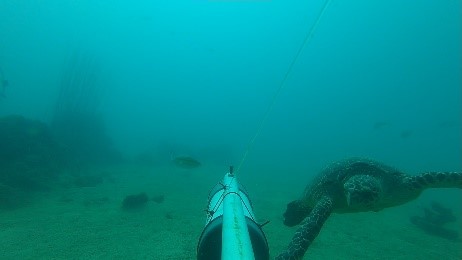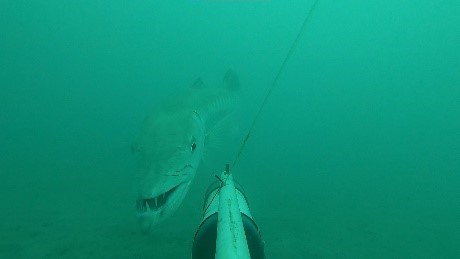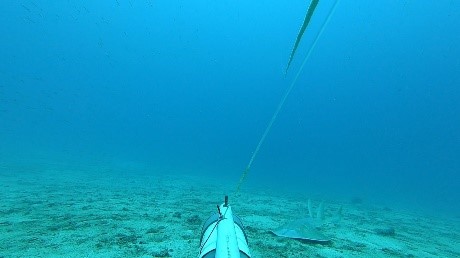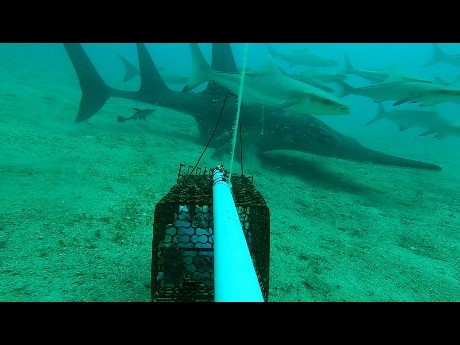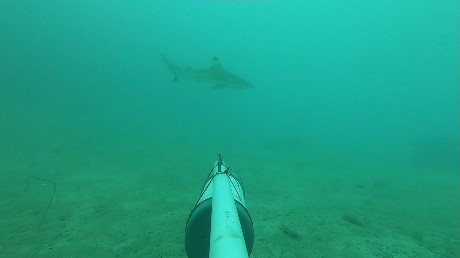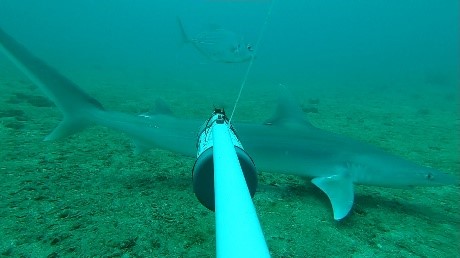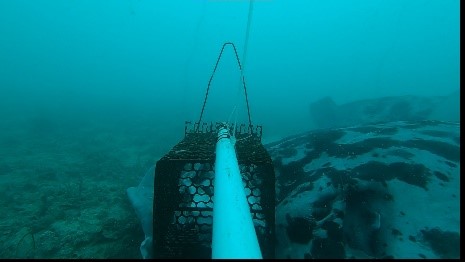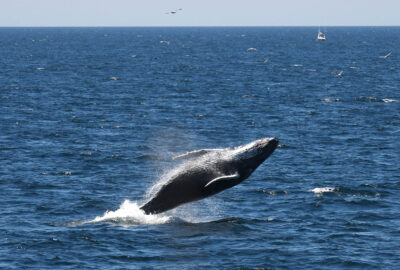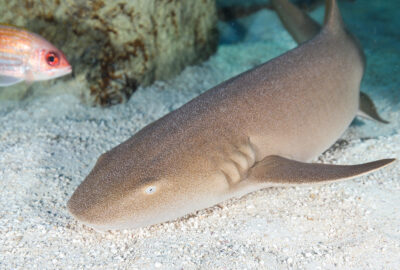Protecting the Giant Bottom-Dwellers of Karimunjawa National Park
This post is one of a series on projects supported by the New England Aquarium’s Marine Conservation Action Fund (MCAF).
By New England Aquarium on Thursday, March 23, 2023


Through MCAF, the Aquarium supports researchers, conservationists, and grassroots organizations around the world as they work to address the most challenging problems facing the ocean.
By Faqih Akbar Alghozali
Indonesia has been known as a home for hundreds of shark and ray species across its waters. One of them is the giant guitarfish (Glaucostegus typus), a critically endangered species due to its highly valued and sought-after fin in the national-international market. Despite being listed in Appendix II of the Convention on International Trade in Endangered Species (CITES), this species is still threatened as a bycatch from fisheries activity in the Java Sea, notably from the Northern Java coast. The Elasmobranch Project Indonesia (EPI – Yayasan Hiu Pari Lestari), a local non-profit organization working in the field of shark and ray conservation in Indonesia, was the first to specifically study this species in Karimunjawa National Park (KJNP). It is a national park located in the midst of fisheries traffic in Java Sea and probably one of the last potential strongholds to prevent giant guitarfish extinction there.
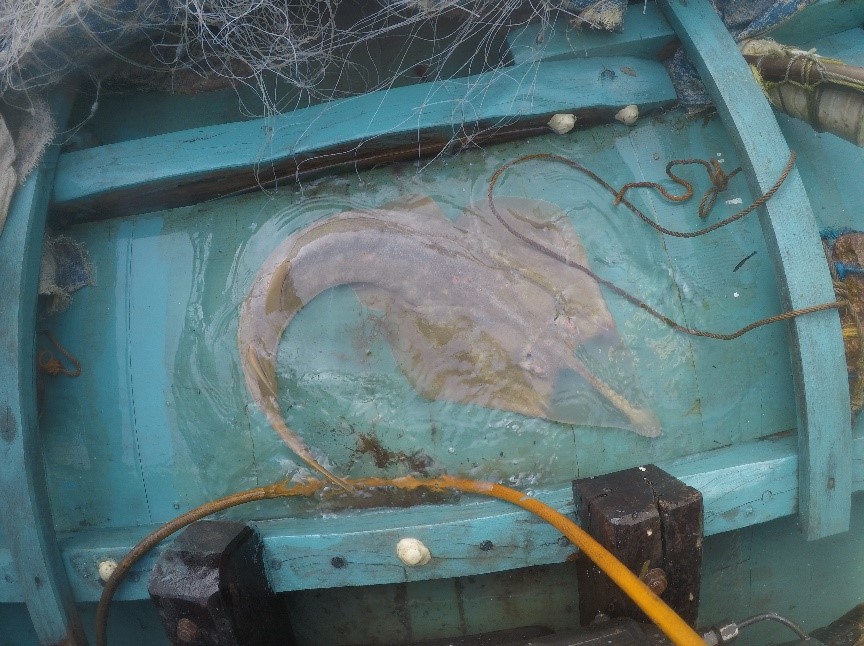
In the first step for studying the giant guitarfish through a conservation project called the Guitarfish Project, the EPI team assessed the local fishers’ knowledge, fisheries characteristics, perception of the species, and other social aspects which would be critical to manage the species later in the future. It was understood that only artisanal fisheries are allowed in the national park and reflected in the gears used by the fishers, including handline, gillnet, fish trap (bubu), and speargun. However, except bubu, these gears do possess a threat to catch giant guitarfish. Furthermore, the team also learned about the existence of wedgefish species that can be found in (KJNP) and is also a potential bycatch species by the local fishers.
The EPI team considered giant guitarfish and wedgefish to be threatened as bycatch from the use of handline and gillnet in the national park. However, the team considered both species as a secondary valuable catch or jackpot, as the local fishers said, if caught by speargun fishers. This is due to the decision-making capability they have to catch/not-to-catch the giant guitarfish and wedgefish as a catch with full conscience upon encountering both species underwater. This could be a significant threat to both species compared to other gears since encounters are most likely to happen with speargun fishers and considering they possess a custom-made large-sized hook to pull the species up to the boat.
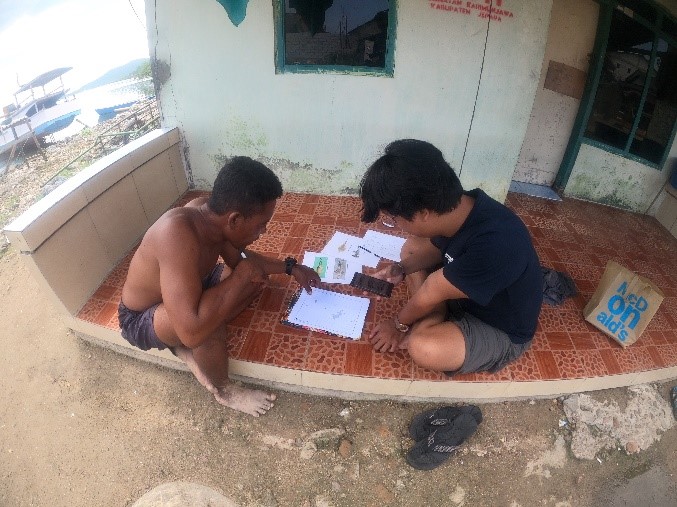
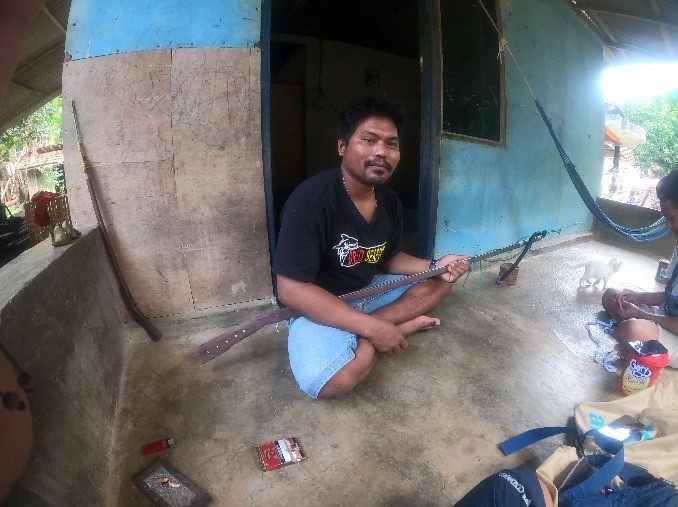
The team also learned from the fishers that both species can be found on sandy/muddy seafloors between 1-40m deep, and this is used as a reference for the team to look for them using the Baited Remote Underwater Video (BRUV) method. Over 450 BRUVs were deployed in areas where fishers previously encountered/caught giant guitarfish and wedgefish. After watching all videos taken, the team learned that both species may face competition as other predators were recorded, including those considered to be reef specialist. The green (Chelonia mydas) and hawksbill turtles (Eretmochelys imbricata) occasionally showed up briefly to check the bait before swimming past. On the other hand, the giant morays and great barracudas were more curious and aggressive in checking the baits as they often stayed long before leaving.
/
Some shark and ray species, although less common, were also encountered. These include the blacktip reef sharks (Carcharhinus melanopterus), a sicklefin weasel (Hemigaleus microstoma), snaggletooth sharks (Hemipristis elongata), an ocellated eagle ray (Aetobatus ocellatus), blotched fantail rays (Taeniurops meyeni), a mangrove whipray (Urogymnus granulatus), a pink whipray (Pateobatis fai), and a honeycomb whipray (Himantura undulate).
The team finally saw the giant guitarfish (G. typus) and bottlenose wedgefish (Rhynchobatus australiae) after the 40th and 200th videos. A few more encounters with both species then follow, although both species’ presence in the BRUVs was considered low. The giant guitarfish seems to be less interested in the bait used compared to the bottlenose wedgefish. They had the same symbiont in live sharksuckers (Echeneis naucrates), while the Bottlenose Wedgefish was followed by two other symbionts: the common remoras (Remora remora) and Ccbias (Rachycentron canadum). Although low in numbers during the study, this finding is the perfect stepping stone to start the conservation effort for both giant guitarfish and wedgefish in KJNP.
/
At the end of the project, the EPI team invited and provided several fishers across all villages with a workshop on shark and ray conservation. The team shared about shark and ray basic knowledge, conservation, regulation, and how fishers can contribute to shark and ray conservation through citizen science, especially for giant guitarfish and wedgefish. The workshop also provided the fishers with the best practice to live-release a shark/ray and how to report the information to the EPI team. After the workshop, the fishers were provided a voluntary pledge containing options for citizen science contribution. The options included are: A. report information of any caught shark and ray to the EPI team and B, C, or D, which include the “A” option and to live-release giant guitarfish catch below 1m, 1.8m, and all sizes, respectively.

All fishers were willing to sign the pledge, and surprisingly, over one-third of them chose the B option. It means they are willing to voluntarily report any shark and ray catches and live-release both giant guitarfish and wedgefish under 1m long. Despite understanding that both species are threatened and most fishers stated that both species have little contribution to their income, catching the big individuals of both species feels like a jackpot to them. This is due to the adult of both species can weigh over 75kg and have a considerable market price. However, their willingness to support the conservation of both species on their own should be a bright start for giant guitarfish and wedgefish in the national park.
The social and ecological information produced from this project, combined with the positive responses the local fishers showed, are critical in providing the KJNP Agency the reference and confidence that KJNP may perhaps be a stronghold for giant guitarfish and wedgefish in the Java Sea.

